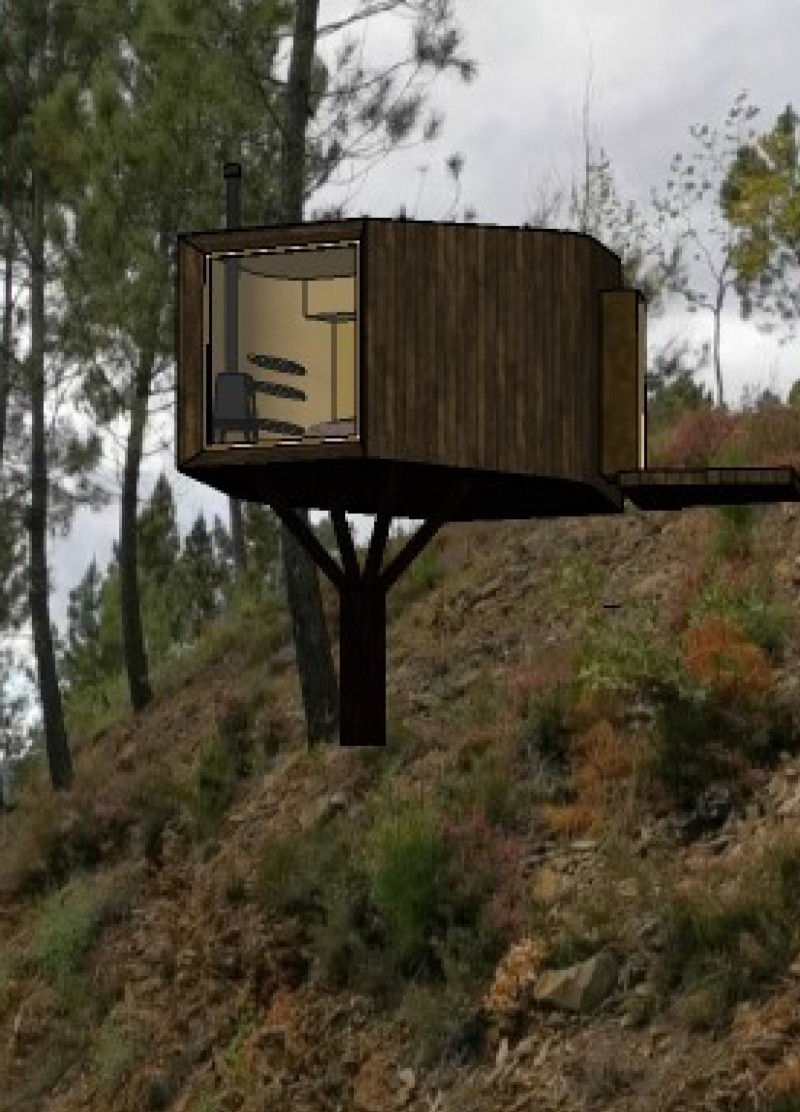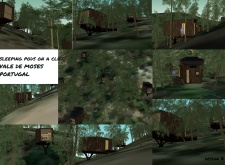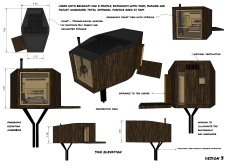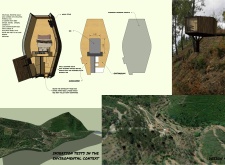5 key facts about this project
"Sleeping Pods on a Cliff" is an architectural project situated in Vale de Moses, Portugal. This design focuses on creating compact living spaces that blend seamlessly into the natural landscape while prioritizing sustainability and guest comfort. The sleeping pods serve as unique lodgings that allow occupants to immerse themselves in the surrounding environment.
The primary function of the project is to provide a restful retreat that fosters relaxation and connection to nature. Elevated on stilts, the pods minimize land disruption, preserving the natural flora and fauna. This architectural approach ensures that the structures do not impose on the landscape but rather complement it, resulting in a harmonious coexistence with the forest and valley views.
Sustainable design principles are evident throughout the project. The use of local materials such as wood, cork, and eucalyptus reflects a commitment to ecological responsibility. Photovoltaic panels generate renewable energy, allowing the pods to operate independently. Rainwater collection systems further enhance sustainability, reducing reliance on external water sources.
Architectural details highlight the project's uniqueness. Each pod incorporates large panoramic windows that maximize natural light and views, creating an immersive experience. The interior layout is designed efficiently, featuring a compact bedroom, bathroom, and wardrobe that prioritize functionality without sacrificing comfort. A wood stove adds warmth and ambience, contributing to the cozy atmosphere during colder months.
The project's design distinguishes itself through its bioclimatic strategies. Natural ventilation systems are integrated to ensure optimal airflow while minimizing the need for mechanical heating and cooling. This thoughtful approach not only enhances occupant comfort but also reinforces the project's energy efficiency goals.
The combination of innovative design and careful environmental consideration makes "Sleeping Pods on a Cliff" a noteworthy example of contemporary architecture in a natural setting. For those interested in exploring the intricacies of this project, including architectural plans, sections, and designs, a detailed presentation is available for further review. This analysis encapsulates the essence of the project, emphasizing its significance within the field of architecture and its potential as a model for future designs focused on sustainability and harmony with nature.






















































